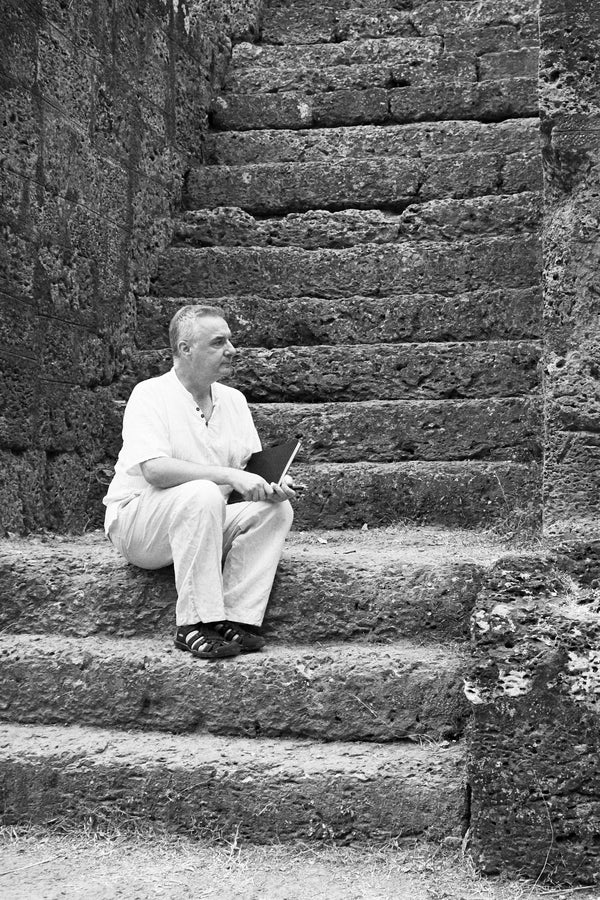Lucas Varro is an artist of image and word, whose life and work are devoted to silence, myth, and the sacred ruins of Angkor. Based in Siem Reap since 2014, he has walked the temple paths almost daily for more than a decade, shaping a body of work that merges the contemplative precision of fine art photography with the lyrical depth of mythic and poetic writing.
Varro’s photographs are not simple records of ancient architecture. They are meditations—crafted through analogue black-and-white film, medium and large format cameras, and the patient shaping of chiaroscuro and hand-toned prints. Each image arises from ritual practice: field notes, sketches, and repeated visits at dawn or after rain, waiting for the light to reveal the soul of stone. The resulting works—limited-edition pigment prints on fine art paper—carry an atmosphere of stillness, impermanence, and reverence.

Alongside the visual, his writings expand the invitation. In Whispers from the Stone and Sanctuary of Meaning, in mythic cycles such as The Serpent and the Star and Dragons: Hymns of Scale and Shadow, he gathers field journals, contemplative essays, and luminous retellings of Khmer and world myth. Together, the photographs and the words form one practice: a Library and a Gallery, both dedicated to silence, memory, and the sacred imagination.
Born in 1966 and raised on a small hill-farm in England, Varro’s earliest sensibilities were shaped by solitude, storytelling, and a close relationship with the natural world. He studied the science of visual perception at Cambridge, trained in fine art in London, and spent more than two decades apprenticed to traditional master craftsmen. Travels across Asia—India, Thailand, Indonesia, Japan—deepened his aesthetic, before he and his wife, Annie, moved to Cambodia to live near the temples that had long called to him.
His vision is steeped in the Japanese philosophy of wabi-sabi: beauty found in impermanence and authenticity. He does not see the temples as ruins, but as living monuments, made more luminous by time and decay. Through fracture and moss, shadow and silence, he reveals not loss, but becoming.
With his ongoing Spirit of Angkor series, and with each book and cycle of writing, Lucas Varro offers a threshold: an invitation to step beyond time and enter the sacred. His works are vessels—for wonder, for memory, for contemplation. They honour what is visible, and what is not.

